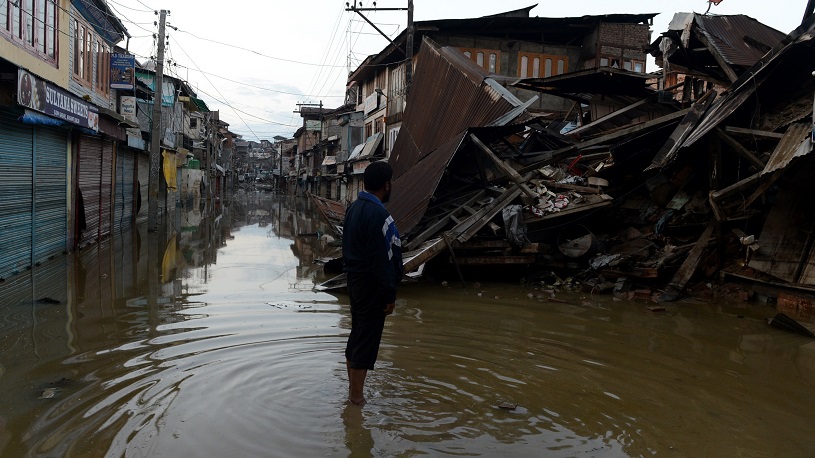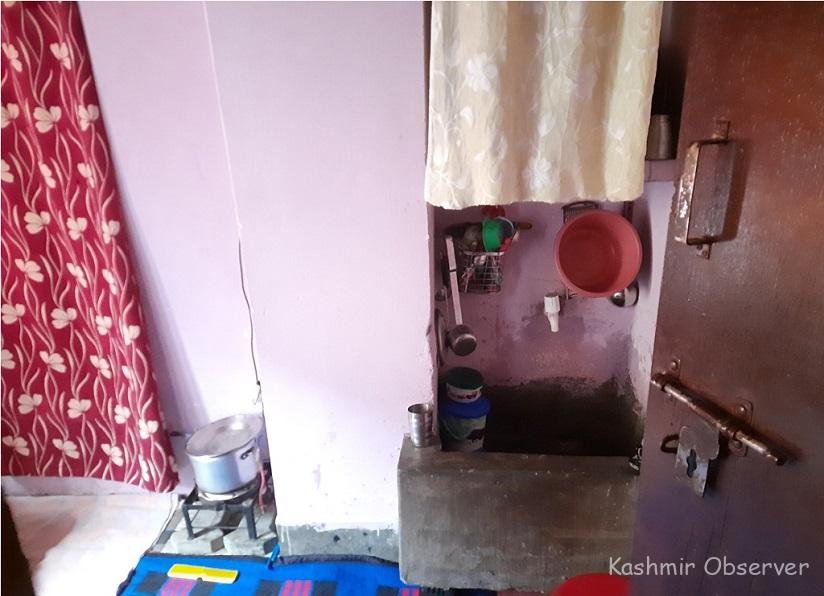
“Our houses weren’t considered damaged and we were forced to live in those flood-stricken shelters. In all these years, government should’ve helped those who were not able to rebuild their residences.”
By Farzana Bashir
ON the window of her rented room in Srinagar’s Nowpora area, Zareena Farooq is trying to visualize the fretful flood scenes of 2014. Although eight years have already passed since that catastrophic fall, she’s still carrying the dreadful deluge with her.
“How can I forget it,” says Zareena almost choking with emotions. “I lost everything in that fall including my beautiful home.”
In the beginning of year 2014, Zareena’s well-to-do husband had availed a bank loan for boosting his business but later that year he had lost everything in floods. He couldn’t pay his debt on time and ended up selling his properties, including his house.
“We were given some token relief by government and left to fend for ourselves,” Zareena says. “It was a natural calamity, a humanitarian crisis. The government should’ve helped us rebuild our lives, rather than letting banks to dictate and devour our addresses in the name of interests.”

While some people rebuild their houses from scratch, others couldn’t due to paucity of means. Many houses that withstood the deluge were eventually declared unfit for living. Among them was Mohammad Shafi’s Srinagar shelter.
“We were living in Munawarabad in our flood-hit house all these years until we vacated it last year,” says Shafi, a 57-year-old sales executive in a private company. “We now live in a rented room.”
After floods, the government distributed relief among the victims whose houses were damaged in the deluge. “The government did help us but our damage was much bigger than they estimated in their records,” Shafi says.
“Our houses weren’t considered damaged and we were forced to live in flood-stricken shelters. In all these years, government should’ve helped those who were not able to rebuild their residences.”

As per a study—‘A satellite-based rapid assessment on floods in Jammu & Kashmir–September, 2014—by the department of environment & remote sensing and the ISRO, the 2014 floods inundated 557 sq-km of Kashmir and affected at least 22 lakh people. The natural fury stranded thousands of people inside their submerged homes and cost the economy more than Rs 100 crore.
Four years after that flood, the government approved 4,442 houses in JK under its Pradhan Mantri Awas Yojana (urban). However, as of January 2018, hardly eight shelterless families were provided with the house– three in Budgam, four in Baramulla and one in Kupwara.
The assistance to the flood victims was disbursed from state disaster relief fund, the Prime Minister’s National Relief Fund and the Prime Minister’s Development Package.
But despite this relief, Zareena remains roofless till date. She has been moving from one place to another along with her husband and three children since that flooded fall.
After losing everything in the deluge, her husband is now driving people’s cars for putting food on the table of his family.
“But his low income hardly helps our family,” Zareena says. “My two children were studying in private school, but we had to transfer them to a government school because our house rent is Rs. 5000 per month and house expenses are over the roof.”
Follow this link to join our WhatsApp group: Join Now
Be Part of Quality Journalism |
Quality journalism takes a lot of time, money and hard work to produce and despite all the hardships we still do it. Our reporters and editors are working overtime in Kashmir and beyond to cover what you care about, break big stories, and expose injustices that can change lives. Today more people are reading Kashmir Observer than ever, but only a handful are paying while advertising revenues are falling fast. |
| ACT NOW |
| MONTHLY | Rs 100 | |
| YEARLY | Rs 1000 | |
| LIFETIME | Rs 10000 | |











